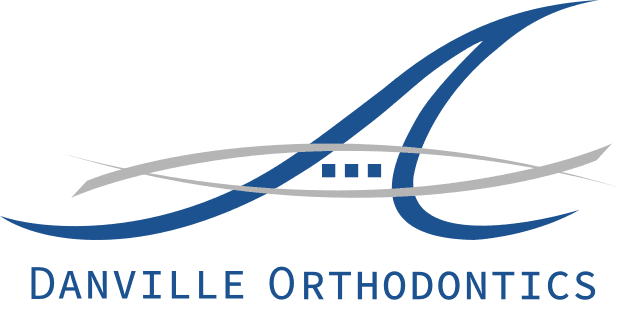Life After Orthodontic Treatment
Orthodontic treatment can be a life-changing experience. After months or even years of wearing braces or aligners, achieving a straight, healthy smile is noteworthy. But what happens next? Many people are left wondering what life is like after orthodontic treatment. In this blog post, we'll explore what to expect regarding maintaining your new smile, dietary changes, and other adjustments you may need to make to ensure your orthodontic treatment is a long-term success.
Post-Treatment Adjustments
After completing orthodontic treatment, patients may experience various adjustments as they transition to life without braces or aligners. Here are insights into what to expect immediately after treatment, including discomfort, maintenance, and care:
- Discomfort: It's common to experience some pain or soreness in the teeth and gums following the removal of braces or aligners. This discomfort typically subsides within a few days as the mouth adjusts to the absence of orthodontic appliances.
- Retainers: Many orthodontic treatments require retainers to maintain the results achieved. Immediately after treatment, patients may need to wear their retainers full-time or as prescribed by their orthodontist. Retainers help prevent teeth from reverting to their natural positions and ensure the longevity of the treatment outcomes.

- Oral Hygiene: Proper oral hygiene is vital after orthodontic treatment to prevent gum disease. Patients should continue brushing their teeth and floss daily, and use mouthwash as their orthodontist recommends. Particular attention should be paid to cleaning around any remaining orthodontic hardware or attachments.
- Dietary Considerations: While patients may have had dietary restrictions during orthodontic treatment, they can typically resume eating their favorite foods once treatment is complete. However, it's essential to continue practicing moderation and avoiding excessively hard or sticky foods that could damage the teeth or orthodontic appliances.
- Follow-Up Appointments: Routine follow-up appointments with the orthodontist are essential after treatment to monitor the progress of the teeth and ensure they remain properly aligned. These appointments may include adjustments to retainers, assessments of oral health, and any necessary interventions to maintain treatment results.
Oral Hygiene Routine
- Plaque and Tartar Control: Orthodontic appliances such as braces or aligners can create additional surfaces for plaque and food particles to build, increasing the risk of plaque buildup and tartar formation. Consistent brushing and flossing help remove plaque and prevent its hardening into tartar, which can cause tooth decay and gum disease if left uncleaned.
- Preventing Tooth Decay: Proper oral hygiene is crucial for preventing tooth decay, especially during orthodontic treatment when it may be more challenging to clean around brackets, wires, or aligners. Failing to remove food debris and plaque can create areas of demineralization on the enamel, leading to cavities. You can protect your teeth from tooth decay and maintain their health by diligently brushing and flossing.
- Gum Health: Inadequate oral hygiene can also compromise the health of your gums, leading to gingivitis (gum inflammation) or more severe periodontal disease. Orthodontic treatment may make it easier for bacteria to accumulate along the gum line, increasing the risk of gum problems. A thorough oral hygiene routine, including gentle brushing along the gumline and regular flossing, helps keep gums healthy and reduces the chances of getting gum disease.
- Preventing White Spots: White spots, also known as decalcification or enamel demineralization, can occur when acids produced by bacteria erode the enamel around braces brackets or under aligners. These white spots are areas of enamel damage that are noticeable as chalky or opaque spots on the teeth. Maintaining good dental health and avoiding sugary or acidic foods can help avoid the formation of white spots and preserve the appearance of your teeth after orthodontic treatment.
- Enhancing Treatment Outcomes: By prioritizing consistent oral hygiene practices, you can support the effectiveness of orthodontic treatment and achieve optimal results. A clean and healthy oral environment facilitates tooth movement and minimizes the risk of complications during treatment. Maintaining good dental health can also contribute to a faster and more comfortable orthodontic experience.
Post-Treatment Retention Phase
Once the braces or aligners are removed, the retention phase begins. During this phase, the orthodontist will prescribe wearing retainers according to a specific schedule, typically:
- Full-time wear: You may initially need to wear your retainer full-time, including during sleep, for a specified period, usually a few months.
- Nighttime wear: After the initial period, most patients wear their retainers only at night while they sleep. This helps maintain the teeth's alignment without the need for continuous daytime wear.
- Gradual reduction: Over time, your orthodontist may gradually reduce the frequency of retainer wear based on the stability of your results and your individual orthodontic needs.
Care and Maintenance of retainers
Proper care and maintenance of retainers are essential for their effectiveness and longevity:
- Cleaning: Removable retainers should be cleaned daily with a soft toothbrush and mild soap or non-abrasive cleaner. Avoid using hot water or harsh chemicals, which can damage the retainer material.
- Storage: When unused, retainers should be stored in their protective case to prevent loss or damage. Avoid exposing them to extreme temperatures or placing them in napkins or pockets where they can be easily misplaced or damaged.
- Regular check-ups: Attend follow-up appointments with your orthodontist as scheduled to ensure your retainers fit effectively and adequately maintain the results of your orthodontic treatment.
Long-Term Retention
Even after the initial retention phase, long-term retention may be necessary to prevent potential relapse. This may involve periodic retainer wear, especially at night, for an extended period, or as your orthodontist recommends.
Some important aspects you should consider after completing your orthodontic treatment
- Diet: During orthodontic treatment, you likely avoided foods that could damage your braces or aligners. After treatment, you may still need to be cautious, especially if you're wearing retainers, but you'll generally have more freedom to enjoy a wider variety of foods.
- Oral hygiene: Proper oral hygiene is crucial during and after orthodontic treatment. Although you may find it easier to clean your teeth without braces or aligners, you'll still need to be diligent about brushing and flossing to prevent cavities and gum disease.
- Follow-up appointments: Your orthodontist will likely schedule follow-up appointments to monitor the stability of your results and make any necessary adjustments. Attending these appointments is vital to ensure your teeth remain in their proper positions.
- Smile confidence: One of the most rewarding aspects of orthodontic treatment is achieving a straighter smile. After treatment, you may feel more confident about your smile and appearance, which can positively impact various aspects of your life, including social interactions and self-esteem.

- Maintenance: Even after your orthodontic treatment is complete, you may need to continue some form of maintenance to keep your teeth aligned. This could include wearing retainers as prescribed by your orthodontist or undergoing additional procedures if your teeth shift over time.
- Overall health: Straightening your teeth improves your appearance and helps maintain better oral health. Properly aligned teeth are easier to clean, reducing the risk of tooth decay, gum disease, and other dental problems.
- Long-term benefits: If properly maintained, orthodontic treatment can last a lifetime. Investing in your smile now can pay off with improved oral health, increased confidence, and a better quality of life in the years to come.
Contact your Danville dentist, Dr. Hoss Abar, DDS, MSD, at Danville Orthodontics to learn more about life after orthodontic treatment.
Resource:
How do avoid orthodontic emergencies?
*Neither this nor any other content in this media is meant to prescribe, recommend, or prevent any treatment or procedure. We highly suggest that you get the advice of a qualified dentist or other medical practitioners regarding your specific dental condition.
